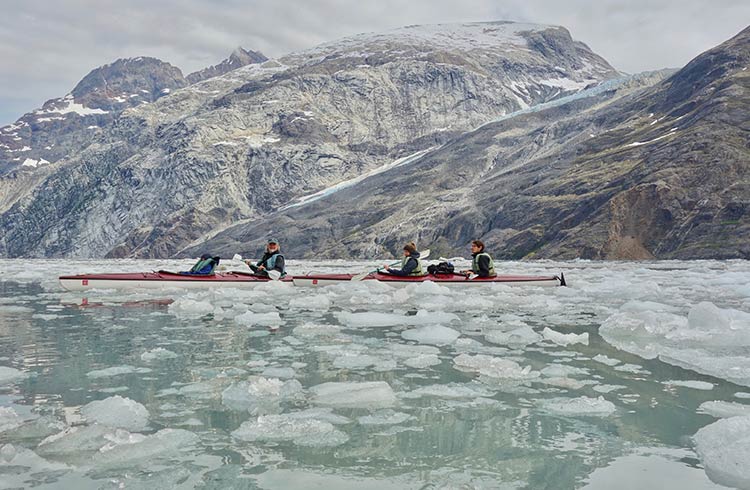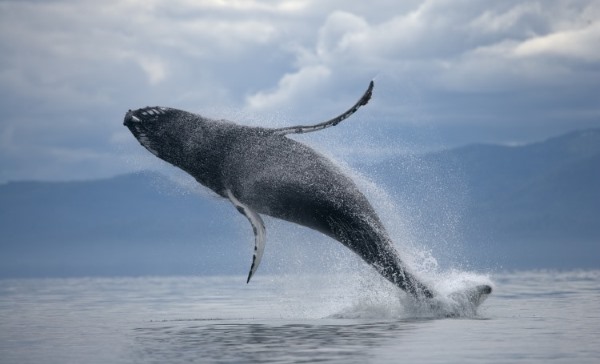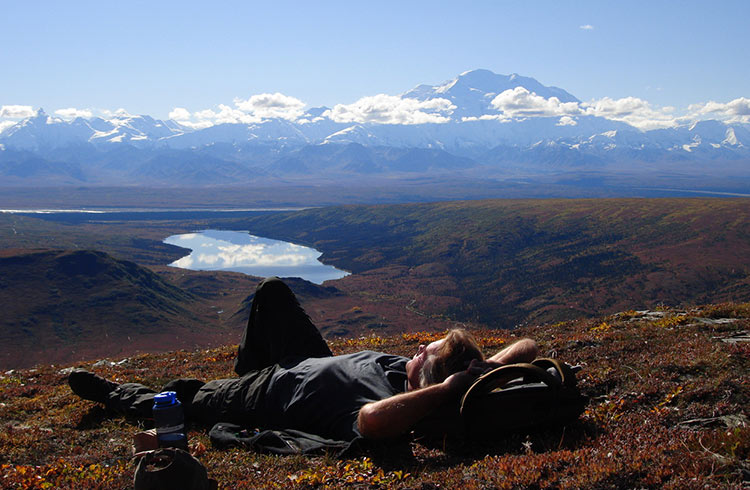Exploring Southeast Alaska with a Sea Kayak Guide
Southeast Alaska (otherwise known as the Panhandle or the Inside Passage) is a rugged and nearly roadless stretch of islands, known as the Alexander Archipelago. We asked a local guide, John Baston, to share his tips on why a trip to Alaska’s Panhandle will be worth your while.
 Photo © John Baston
Photo © John Baston
Here, it’s all about the water. The ocean separates the islands, the glaciers separate the mountains, and the rain separates a real adventurer from a sunburnt tourist swilling a cheap cocktail elsewhere at a beach resort.
I’ve been working as a naturalist and guide in Southeast Alaska for 25 years. I first arrived in Juneau as a young park ranger on my way to Glacier Bay National Park. My flight north from the lower 48 – as it’s referred to by Alaskans – was several hours soaring over what appeared to be an endless sea of mountains, snow, and glacial ice.
The plane descended into Juneau and landed a couple of miles from a huge glacier. I remember feeling so excited to be in this new, wild, and vast place, but I had no idea of the encounters with animals – and sea monsters – that lay ahead.
To cruise or not to cruise – that is the question
The experience of being at sea is essential, but not all cruising is created equal. Aside from the large floating mega hotels, there are many ferries, small ships, and private yachts that can get you onto the water and into the most remote places in Southeast Alaska.
Although it's expensive to take a cruise or charter a yacht, there are less luxurious options that offer keen adventurers a chance to take a journey by boat. The state-run ferry system, known as the Marine Highway, has simple rooms and even lounge chairs on deck that anyone can sleep on in a sleeping bag.
An adventure cruise on a small touring vessel (
But, if a long journey at sea is not for you, there are many day trips that'll take you to see the glaciers and visit wildlife hotspots, returning to land at the end of the day.
So much of our lives are spent on land, so the calm waters of the Inside Passage give us a chance to get off terra firma and explore the sea.

Get a taste of southeast Alaska
The whales, bears, and birds are so abundant in Alaska, thanks to the food sources available. With long hours of summer daylight, the concentration of nutrients and pristine state of the environment make the Inside Passage one of the most productive spots on the earth.
Seafood aficionados look for delicate sablefish, freshly caught salmon and halibut, delectable sea scallops, sweet Dungeness crab, tender spot prawns, and crack up three foot long legs of delicious king crab.
Southeast Alaska also has some of the easiest berry
Every little town seems to have its own smokehouse where they prepare and sell smoked fish, each with their own unique brine. Smoked black cod melts in your mouth and unctuous smoked salmon bellies and collars are the choice cuts on the fish.
Protected wilderness
The Southeast region of Alaska is 97% federally protected land, including the world’s largest wilderness (St. Elias World Heritage site), America’s largest national forest (the Tongass National Forest), Glacier Bay National Park, and Misty Fjords National Monument.
With all this comes an unparalleled opportunity for solitude; watching animals in their natural habitat, human-powered adventures, and reconciliation with a world untrammeled by humankind.
Sea kayaking in the Inside Passage
Here, you can go even deeper into nature and get in a kayak, camp, and unplug. Ultimately, this was my fate as an expedition sea kayak guide. I’ve had my best wildlife encounters on kayak trips.
Watching a bear walk along the shoreline, and having wolves come into my camp is frightening – but exciting. Having a quiet walk along the desolate shoreline and looking for odd stones
However, nothing beats drifting in the stillness from the safety of a
That’s right, there are monsters in this sea.
Related articles
Simple and flexible travel insurance
You can buy at home or while traveling, and claim online from anywhere in the world. With 150+ adventure activities covered and 24/7 emergency assistance.
Get a quote

No Comments